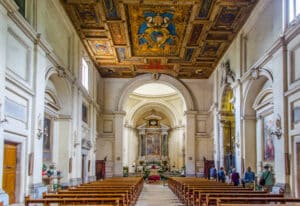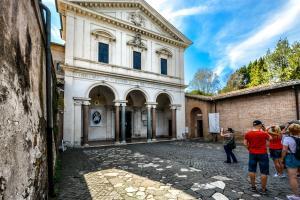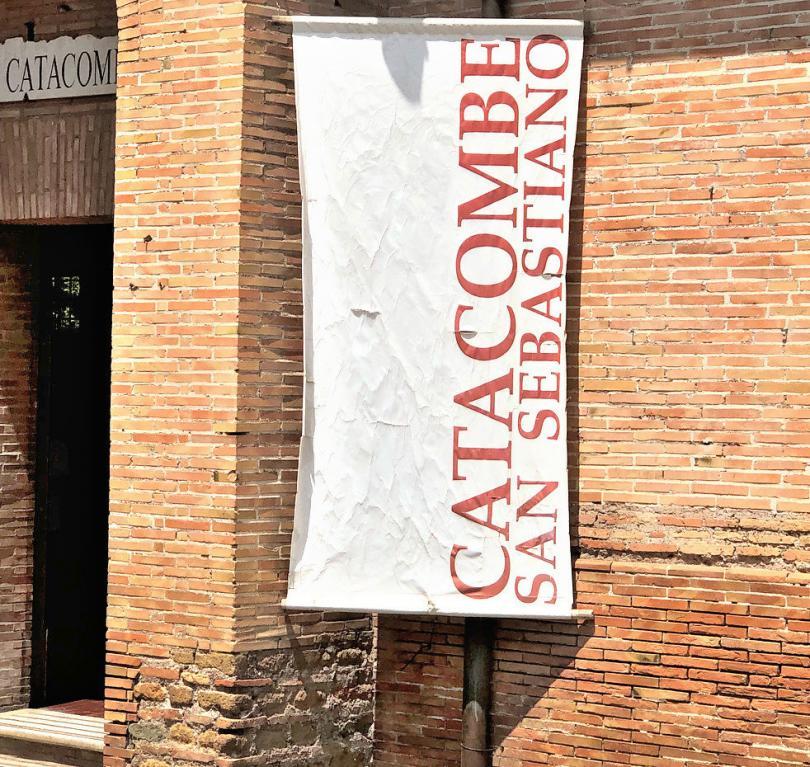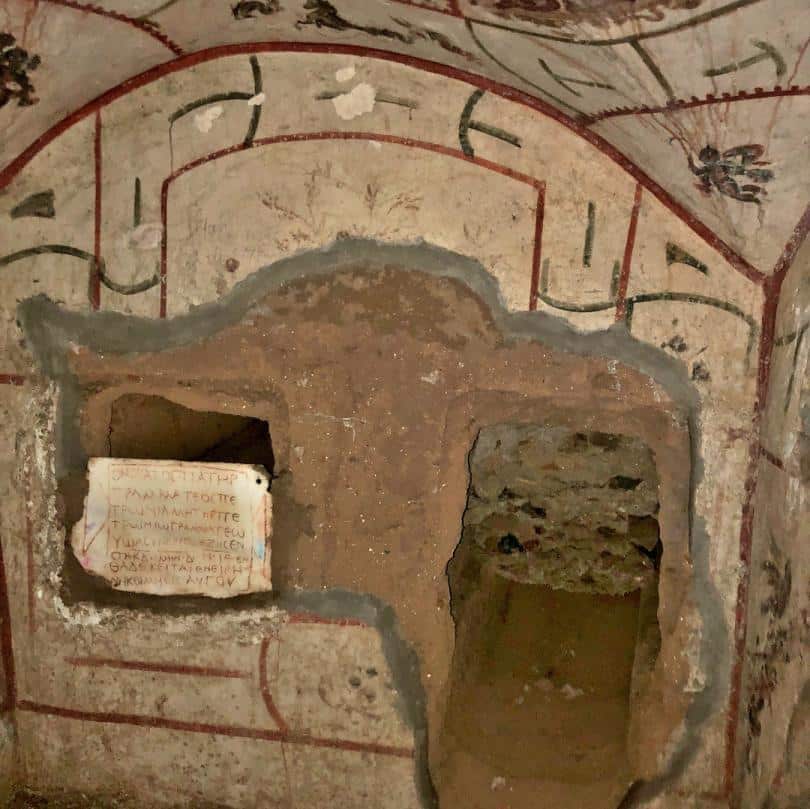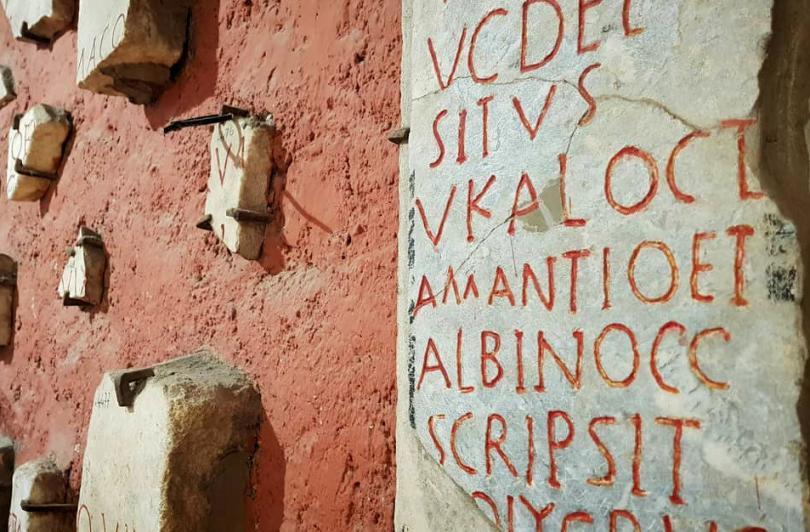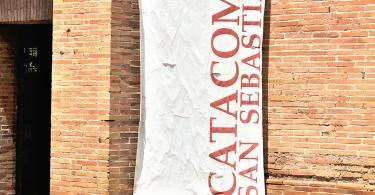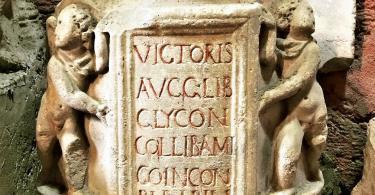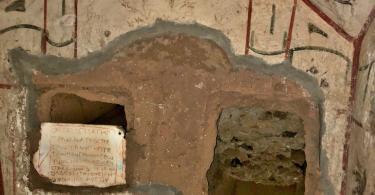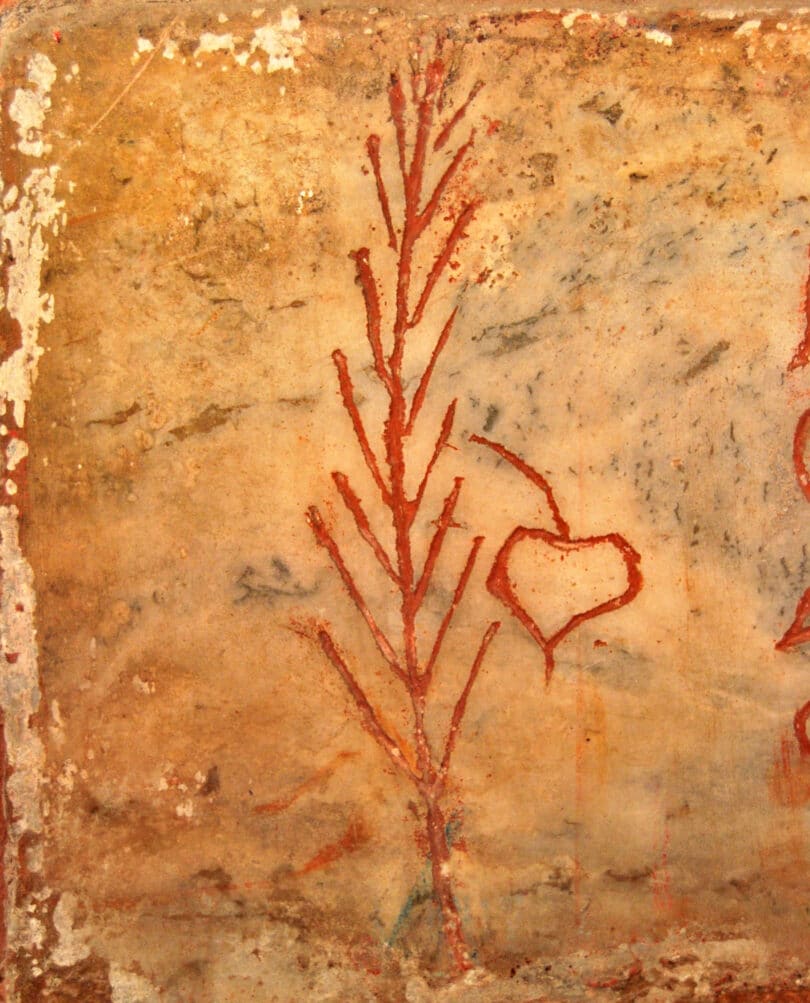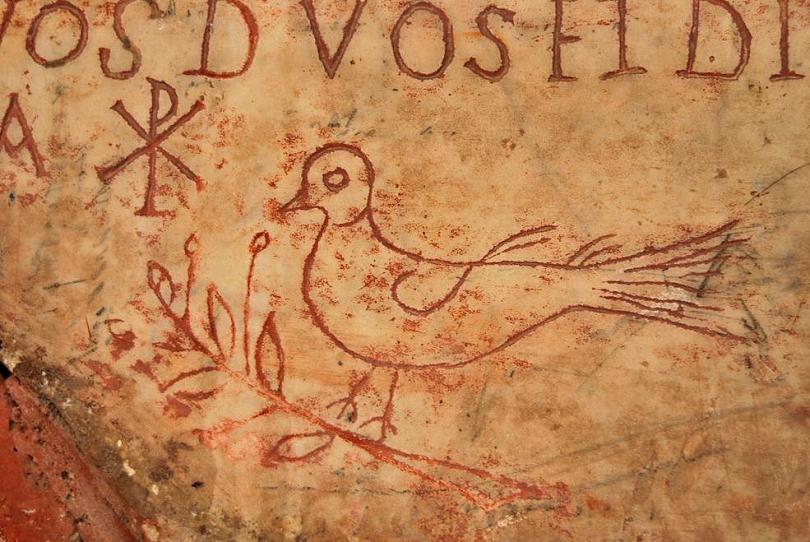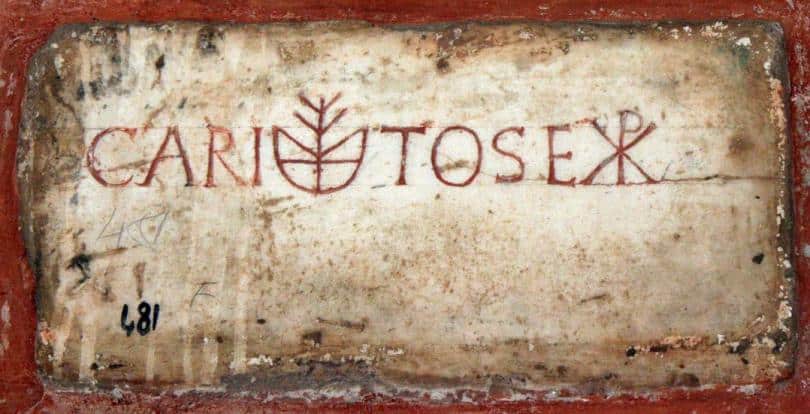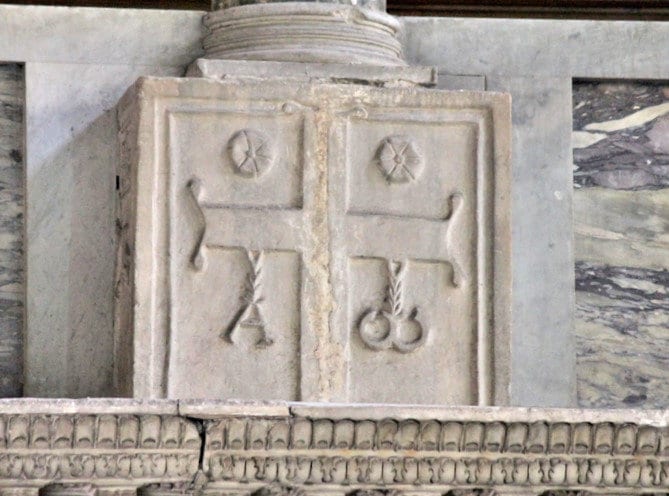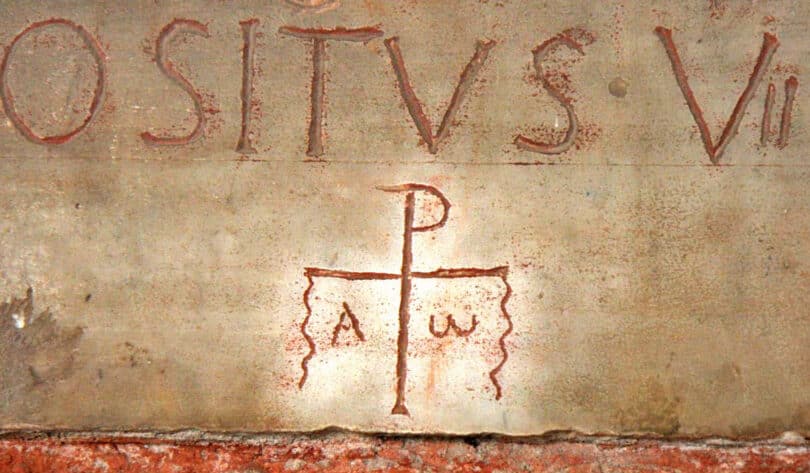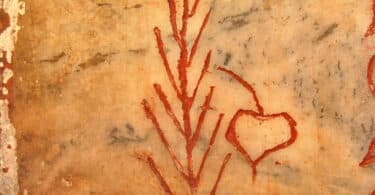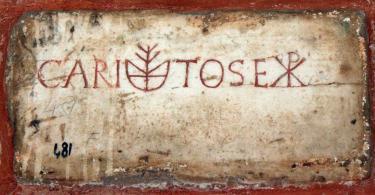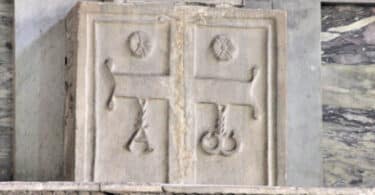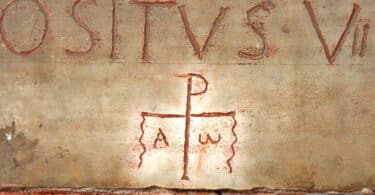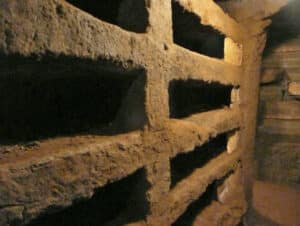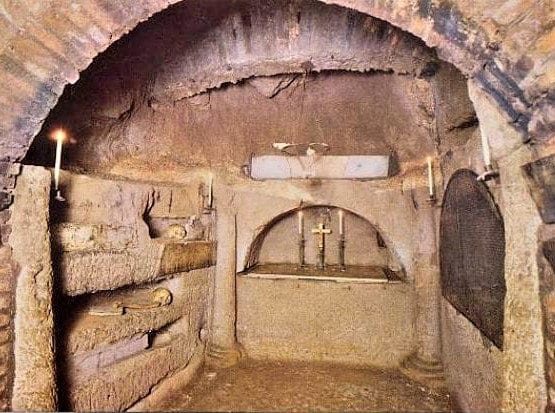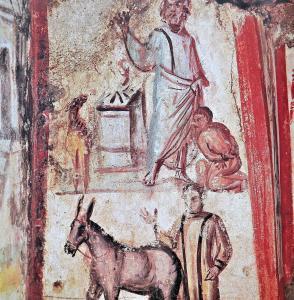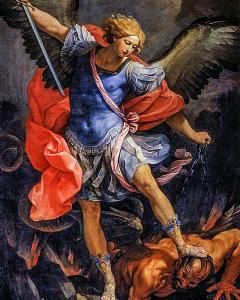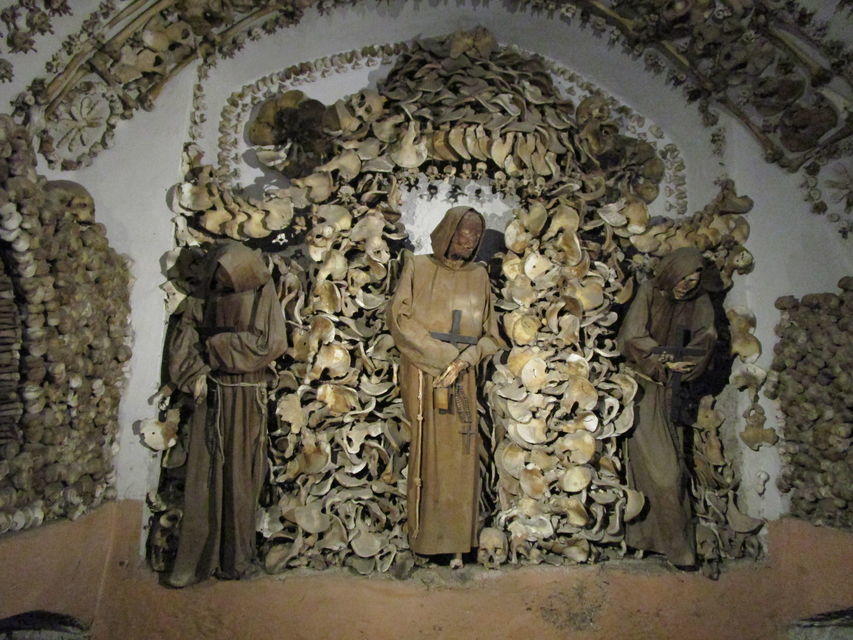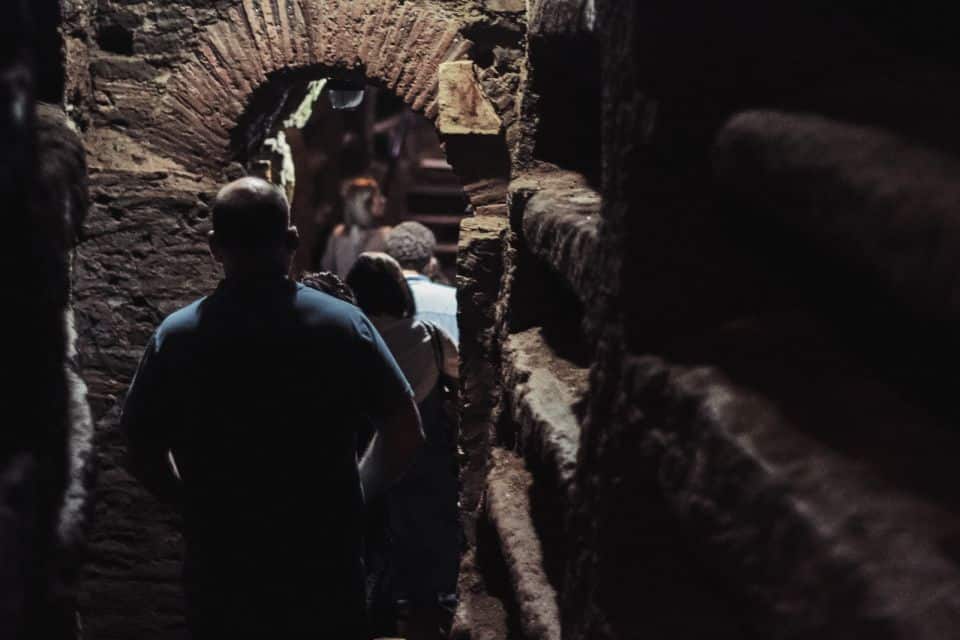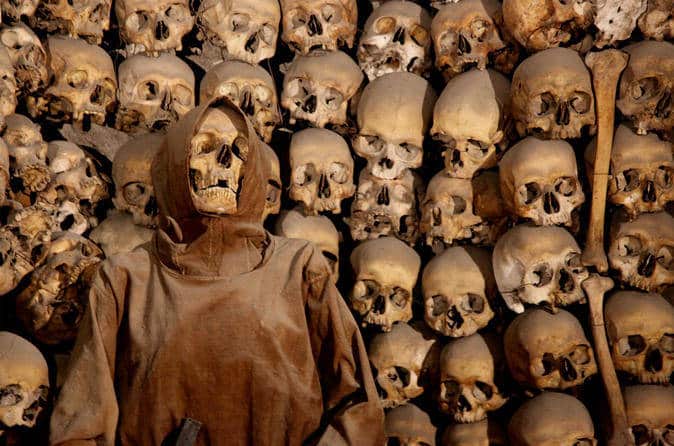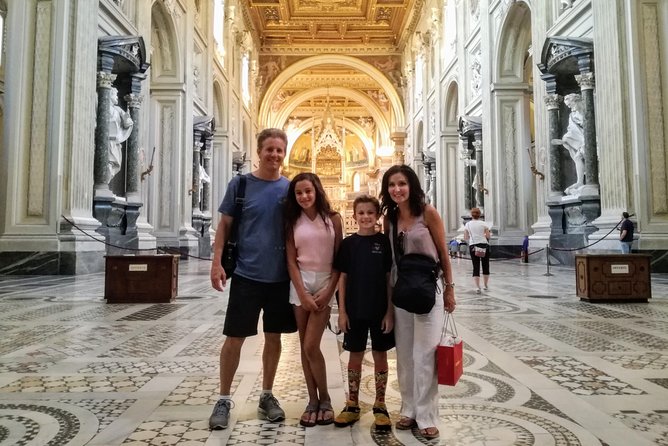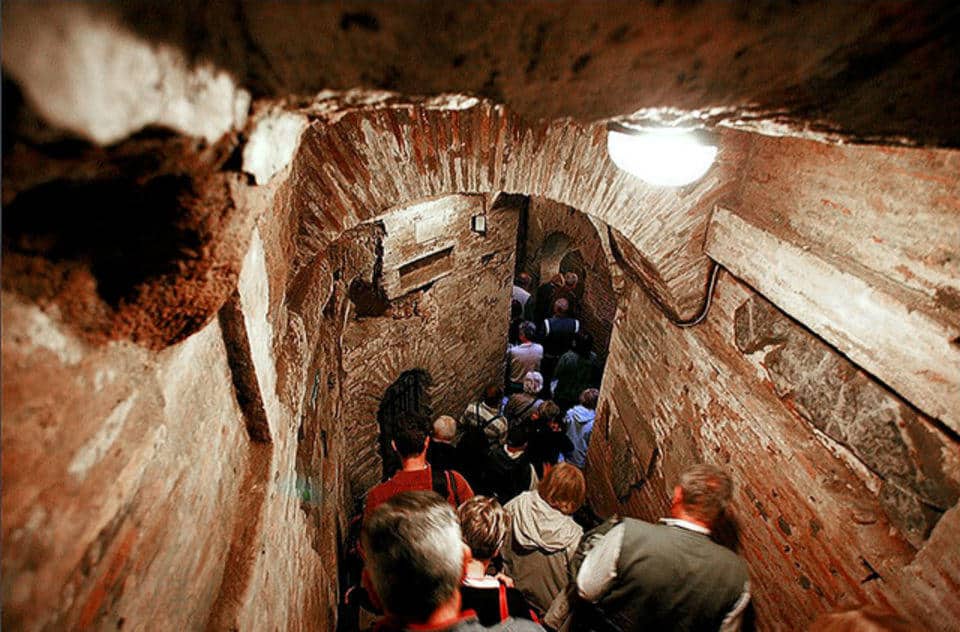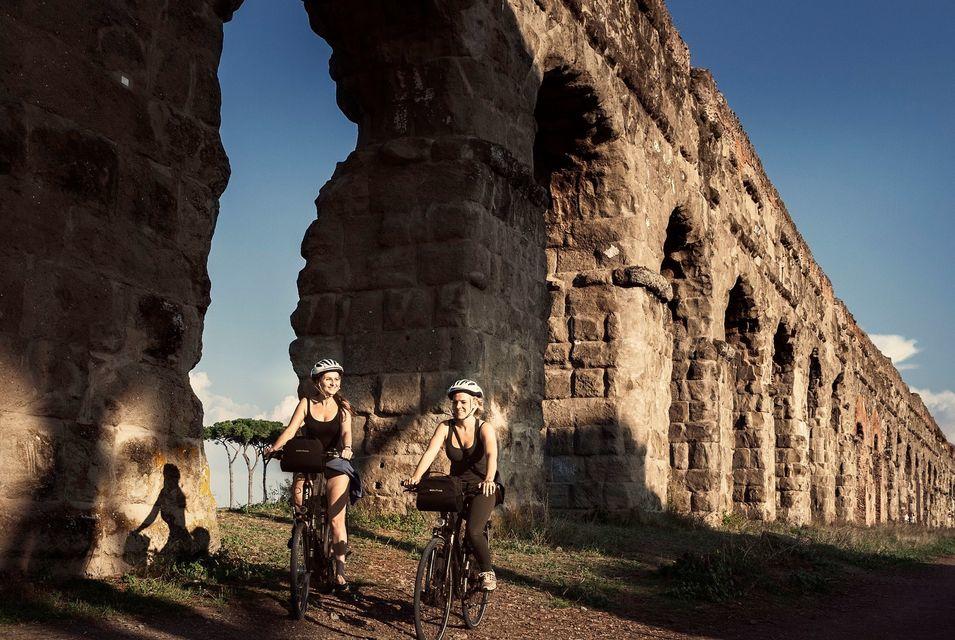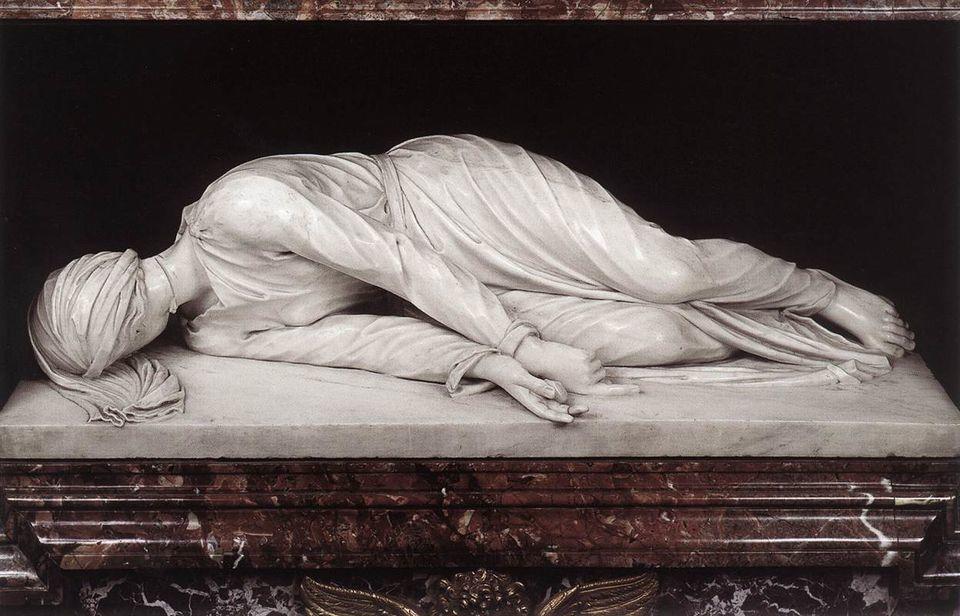Catacombs of Rome: Catacombs of San Sebastiano
St Sebastian on the Appian Way has been a place of pilgrimage since the third century and was venerated long before the martyrdom of St Sebastian in 288 A.D. as it is reputed to have been the temporary resting place of the bodies of SS Peter and Paul during a period of unrest.
St Sebastian was a young officer of the Praetorian Guard during the reign of Diocletian. He was condemned to death when it was discovered that he was a Christian and was tied to a tree on the Palatine Hill and picked archers shot arrows into his flesh. When it was thought that he was dead, the ropes which bound him were cut and he fell to the ground.
A pious lady, named Irene, came to bury the body, but as she found him still breathing she took him home and nursed him. On recovering, Sebastian confronted Diocletian near his palace and was then condemned to be beaten to death and his body to be thrown into the common sewer. A woman named Lucina rescued the body and buried it in the catacombs in the vault where the bodies of SS Peter and Paul had lain, and over the spot was built the present church. In the seventeenth century Cardinal Borghese removed the remains from the crypt to the present chapel, which is directly over the original tomb.

Tomb of St. Sebastian with a statue by Giorgetti and Bernini in Basilica of St. Sebastian Outside the Walls in Rome, Italy
A church was first built here founded by Constantine in the fourth century in honour of the Apostles. It had a nave terminating in an apse and two side aisles. It was restored several times and got its present form in the seventeenth century as the result of work undertaken by Cardinal Borghese, nephew of Paul V ( 1605-1621).
During the 13th and at the beginning of the 17th century, three Roman burial chambers and Christian catacombs were revealed underneath the basilica. In addition, the foundations of a basilica from the reign of Constantine and Roman residences were discovered. The assembly hall (triclia) for commemoration of the dead, with countless inscriptions from the turn of the 3rd to the 4th century, is located beneath the centre of the church. The Christian symbolic language appears time and again: the fish, whose Greek name »ichthy« is formed by the initial letters for the Greek words »Jesus Christ God’s son, saviour«; the lamb, which represents the sacrificial death of Christ; the anchor as a symbol of confidence; the dove as a symbol of peace. In addition, multi-storey burial chambers from the 1st century with paintings, stucco decorations and inscriptions have been preserved.
Catacombs of San Sebastiano Photo Gallery:
Catacombs of San Sebastiano Opening times: Mon-Sat 8.30am-noon, 2.30pm-5pm
Catacombs of Rome: Catacombe di Santa Ciriaca (di San Lorenzo)
The catacombs of St Lawrence and St Cyriacus (Catacombe di Santa Ciriaca), which extend along the Via Tiburtina within Verano Hill, can be viewed from the cloister. There has been an extensive necropolis here since the 1st century. The surviving early Christian paintings include a fresco of The Wise and Foolish Virgins.
Photo Gallery:
Catacombs of Rome: Catacombs of Saint Agnes
Agnes, according to legend a beautiful young Roman, suffered martyrdom for her steadfast refusal to marry the son of a heathen city prefect. A church in her honour was founded in the 4th century by Constantia, daughter of Constantine, on the Via Nomentana outside the city.
The 7 kilometres (4.3 miles) of tunnels of the 3rd-century catacombs of St Agnes extend beneath the Sant’Agnese fuori le Mura Church (opening hours: daily except Mon afternoon and Sun morning 9am-noon, 4pm-6pm).
Catacombs of Rome: The Via Latina Catacomb
Throughout the construction of an apartment house on the Via Latina in Rome in 1955 a little Christian catacomb was exposed, a possibility historical discovery that ended up being a shocking discovery. The architectural form and painted design of the catacomb were much remarked not just were they extremely lavish, they likewise showed extremely tough to suit the traditional photo of the development of Christian art in late antique Rome.
Catacombs of Rome: Capuchin Crypt
Behind an innocent façade, and in one of Rome’s most unlikely settings—the start of Via V Veneto—the crypt of this church contains the skeletons and bones of some 4,000 Capuchin monks. As if in some grotesque baroque parody, they lie arranged over the walls and vaults of five subterranean chapels. However, more macabre than the skeletons (some still dressed in jaunty clothes), are the bones—vertebrae and shoulder blades—crafted into ghoulish chandeliers or lovingly arranged into decorative patterns.
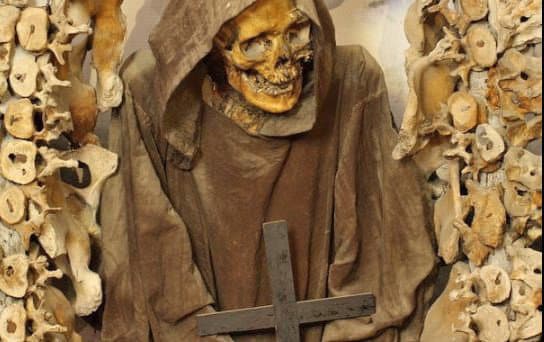
Monks were initially buried here in soil brought especially from Jerusalem; only when space ran out were they left in the open, a practice that continued until as late as 1870. Interment here was a great honour, and in one or two places you can see the remains of children, offspring of noble families who died in childhood. Honour can be yours also if you come on the first Sunday of October. Visitors on this day are granted a special indulgence, thanks to a dispensation from Pope Paul VI (1963-78).
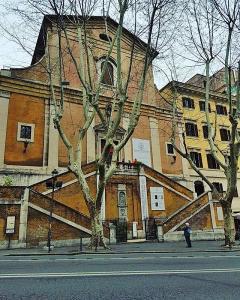
The church (entered separately) was built in about 1624 for Cardinal Antonio Barberini, brother of Urban VIII, a Capuchin friar who clearly cared little for his family’s love of pomp and splendour. His tombstone is set in the ground before the main altar and bears no name or title, only the cheerful legend hic jacet pulvis cinis et nihil: ‘here lie dust, ashes and nothing’.
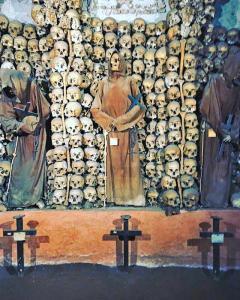
In the 19th century, the church’s main sight, and in fact one of the city’s main sights, was Guido Reni’s 17th- century painting of St. Michael Trampling the Devil (first chapel on the right). It caused an uproar when it was painted, after a contemporary observed that the devil bore an uncanny resemblance to the Pamphilj Pope Innocent X, the Pamphili being arch rivals of Reni’s Barberini patrons.

